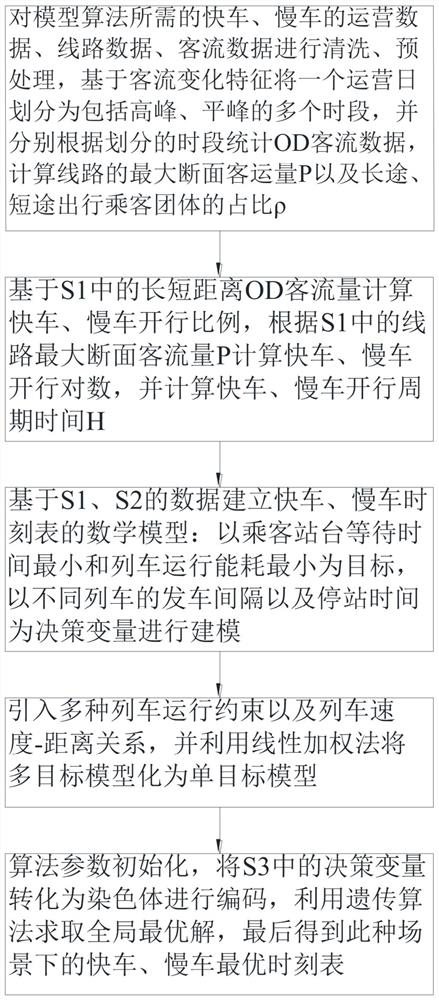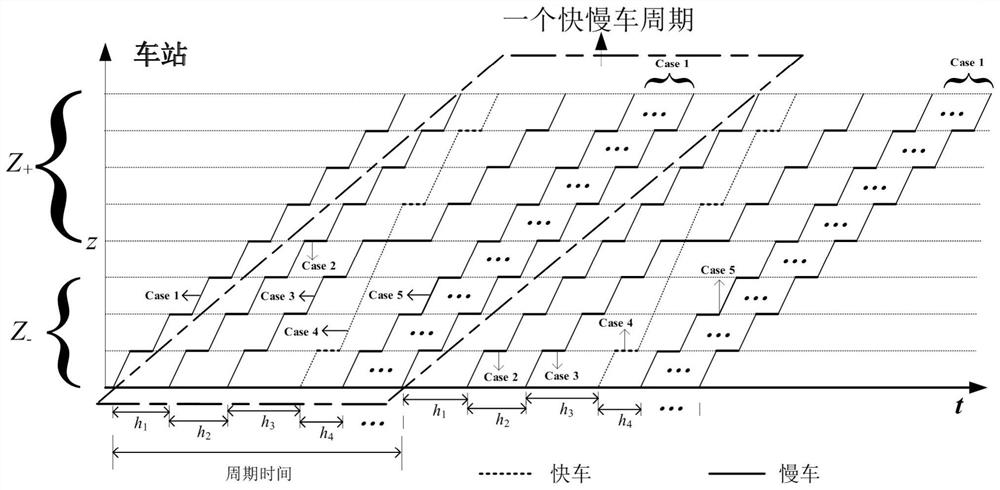Rail transit express and slow train timetable optimization method considering passenger flow and energy saving
A rail transit and optimization method technology, applied in the field of rail transit, can solve problems such as the mismatch between dynamic passenger flow and train capacity, and achieve the effects of shortening travel time, reducing energy consumption, and being more matching and adaptable
- Summary
- Abstract
- Description
- Claims
- Application Information
AI Technical Summary
Problems solved by technology
Method used
Image
Examples
Embodiment Construction
[0110] In order to make the technical means, creative features, goals and effects achieved by the present invention easy to understand, the present invention will be further described below in conjunction with specific illustrations.
[0111] The present invention considers passenger flow and energy-saving rail transit fast and slow train timetable optimization method, and train timetable is modeled, such as figure 1 shown, including the following steps:
[0112] S1. Clean and preprocess the operating data of express trains and slow trains, line data, and passenger flow data required by the model algorithm, and divide an operating day into multiple time periods including peak and off-peak based on the characteristics of passenger flow changes, and divide them according to the divided Statistical OD passenger flow data in time period, calculate the maximum section passenger volume P of the line and the proportion of long-distance and short-distance travel passenger groups ρ;
...
PUM
 Login to View More
Login to View More Abstract
Description
Claims
Application Information
 Login to View More
Login to View More - Generate Ideas
- Intellectual Property
- Life Sciences
- Materials
- Tech Scout
- Unparalleled Data Quality
- Higher Quality Content
- 60% Fewer Hallucinations
Browse by: Latest US Patents, China's latest patents, Technical Efficacy Thesaurus, Application Domain, Technology Topic, Popular Technical Reports.
© 2025 PatSnap. All rights reserved.Legal|Privacy policy|Modern Slavery Act Transparency Statement|Sitemap|About US| Contact US: help@patsnap.com



